When it’s pie time, are you tempted to reach for the prepared crusts at the grocery store? Put those days behind you! This recipe is awesome because it is simple, it makes a perfect crust, and you can make crusts in advance and freeze them for the anticipated pies. It doesn’t require a whole lot of effort, and the payoff is amazing.
Use your crust to make a classic apple pie or go savory with a chicken pot pie.
Why Our Recipe
- A combination of butter and shortening guarantees a flaky pie crust every time.
- Vodka is the secret ingredient that makes this pie crust the easiest to work with. It’ll be perfect even if you have to roll and re-roll it several times!
- Use it to make a fruit pie or pot pie, pre-bake a crust for a creamy pie, turn it into a hand pie, and more! It’s the perfect pastry crust.
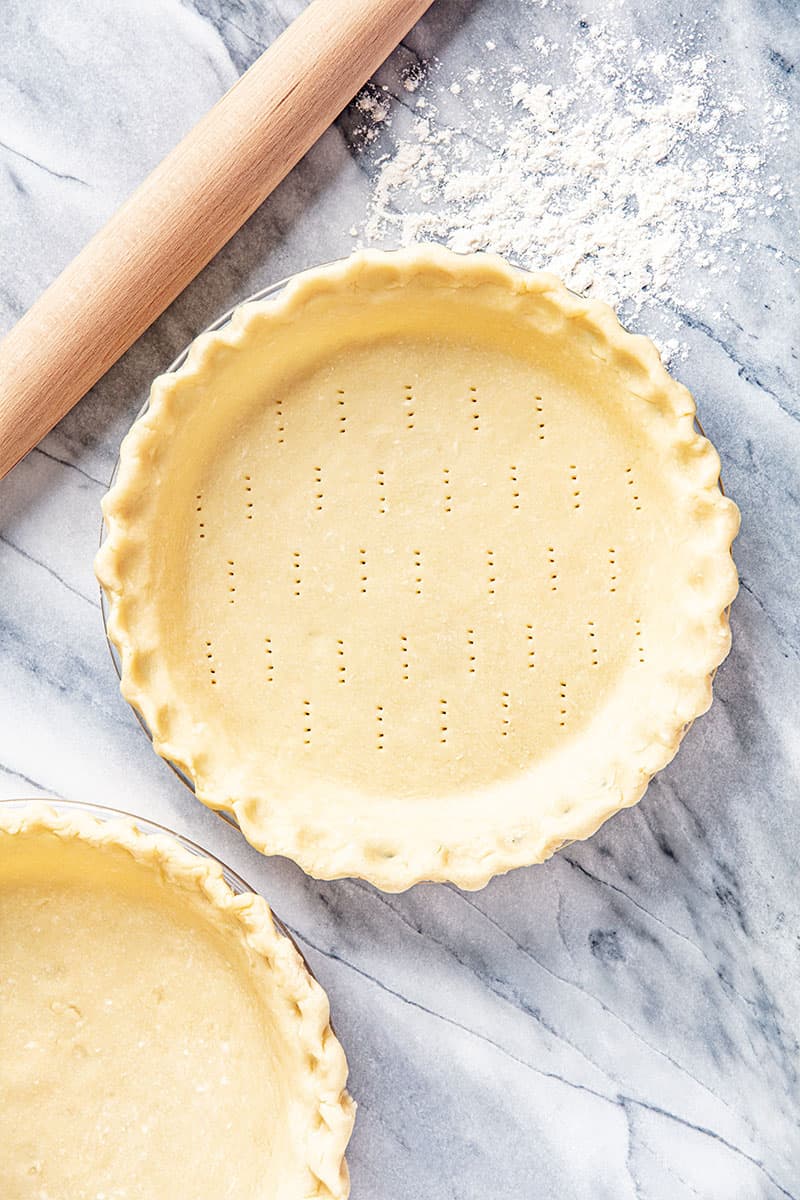
Making the perfect pie crust doesn’t have to be intimidating, especially with this foolproof recipe on hand. The combination of butter and shortening creates an ultra-flaky texture, but what really sets this recipe apart is the addition of chilled vodka, which makes the dough incredibly forgiving to work with. It rolls out smoothly, even if you need to try a few times to get it just right. Whether you’re a beginner or a seasoned baker, this crust delivers consistent results that turn out beautifully every time
Ingredient Notes
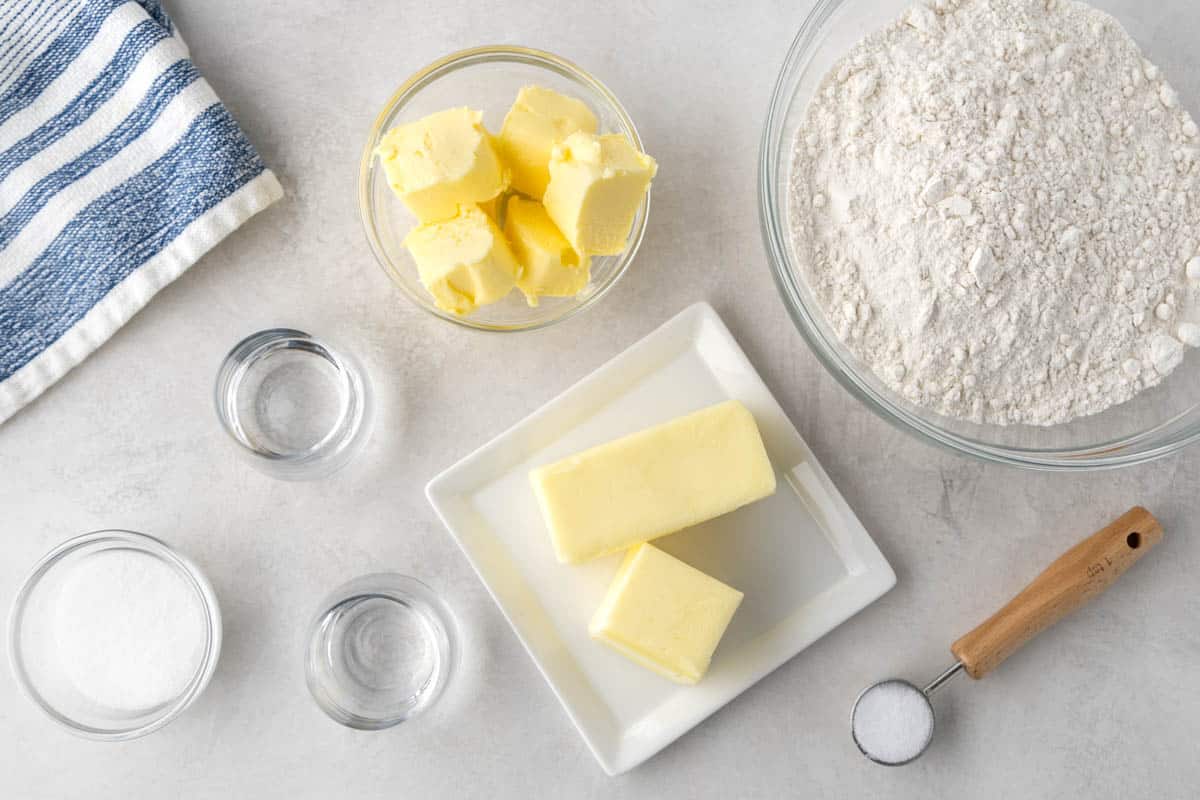
- All-Purpose Flour: Use standard all-purpose flour for this recipe or use an equal amount of pastry flour for even better texture.
- Granulated Sugar: Helps with browning. You can omit it if you’re making a savory pie.
- Unsalted Butter: Cold butter is essential for a flaky texture. Cut it into cubes before adding it to the flour mixture.
- Vegetable Shortening: Like the butter, the shortening needs to be cold. You can replace it with all butter, but we recommend the combination of shortening and butter.
- Ice Water: Ice-cold water prevents the butter and shortening from melting as you work with the dough.
- Vodka: Chilled vodka is the secret to a tender crust. Don’t worry—the alcohol evaporates during baking, leaving no trace of flavor.
Vodka: The Secret Ingredient
Vodka prevents the formation of gluten once the flour in the recipe is hydrated. Gluten gives flour elasticity, which is great for making bread, but not so great for pastries and pie crusts. By inhibiting this elasticity, the crust remains flaky, even if you have to roll it out multiple times.
SUBSTITUTION: You can replace the vodka in this pie crust recipe with an equal amount of cold water in addition to the cold water already called for in the recipe.
Some bakers swear by adding a splash of vinegar to their pie crusts. While it allegedly prevents the formation of gluten, science cannot prove this claim to be true. However, a splash of vinegar may give your pie crust a slightly better color as it prevents oxidation. It will also impact the final flavor of the pie and give it just a hint of acidity. If you use vinegar, only use a splash of vinegar so as to not overwhelm the flavor.
Butter vs Shortening
Pie crusts require fat, and which fat you choose is a matter of personal preference. Each of these can be used interchangeably in the same quantities, but the results will be slightly different due to how each of these fats interacts with the flour when exposed to high heat.
BUTTER: provides the best flavor but doesn’t create quite as flaky a crust on its own, as it has a higher water content (up to 15%), which evaporates during baking and may cause some shrinking or slipping in the crust.
SHORTENING: delivers maximum flakiness by forcing the flour and fat to create layers as it melts, holding its shape well during baking but lacking butter’s rich flavor. For added taste, you can use butter-flavored shortening.
LARD: is very similar to shortening as they have similar melting points, but usually comes from pig fat. It has a distinctive flavor which can be overpowering which is why it’s generally used in savory pies and not so much for sweet pies.
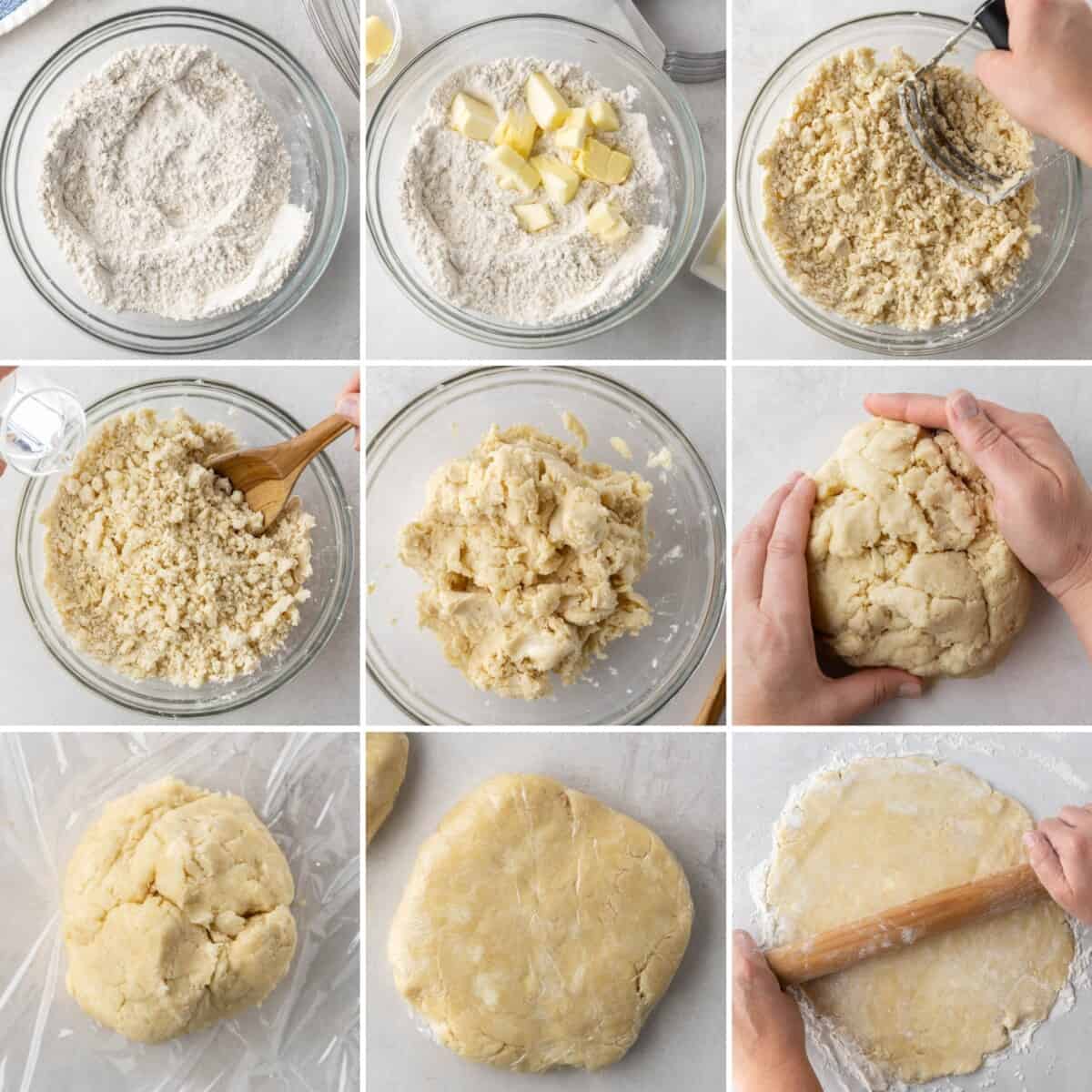
How to Cut Butter or Shortening into Flour
- GRATER: The easiest way to cut fat into flour is to grate it using a cheese grater. This only works well for cold butter. Be sure to grate the butter as finely as possible so that the pieces of fat can be more evenly distributed throughout the dough.
- PASTRY CUTTER: A traditional, old-fashioned way to cut fat into flour is to use a pastry cutter. This specialized kitchen tool has 3 to 4 curved blades attached to a handle so that you can cut the fat into the flour using a rocking motion.
- FOOD PROCESSOR: This method is fast and creates an even texture. Simply place your flour mixture into the bowl of the food processor along with your cold fat. Using the S-blade, pulse the mixture together until it resembles a coarse meal or sand.
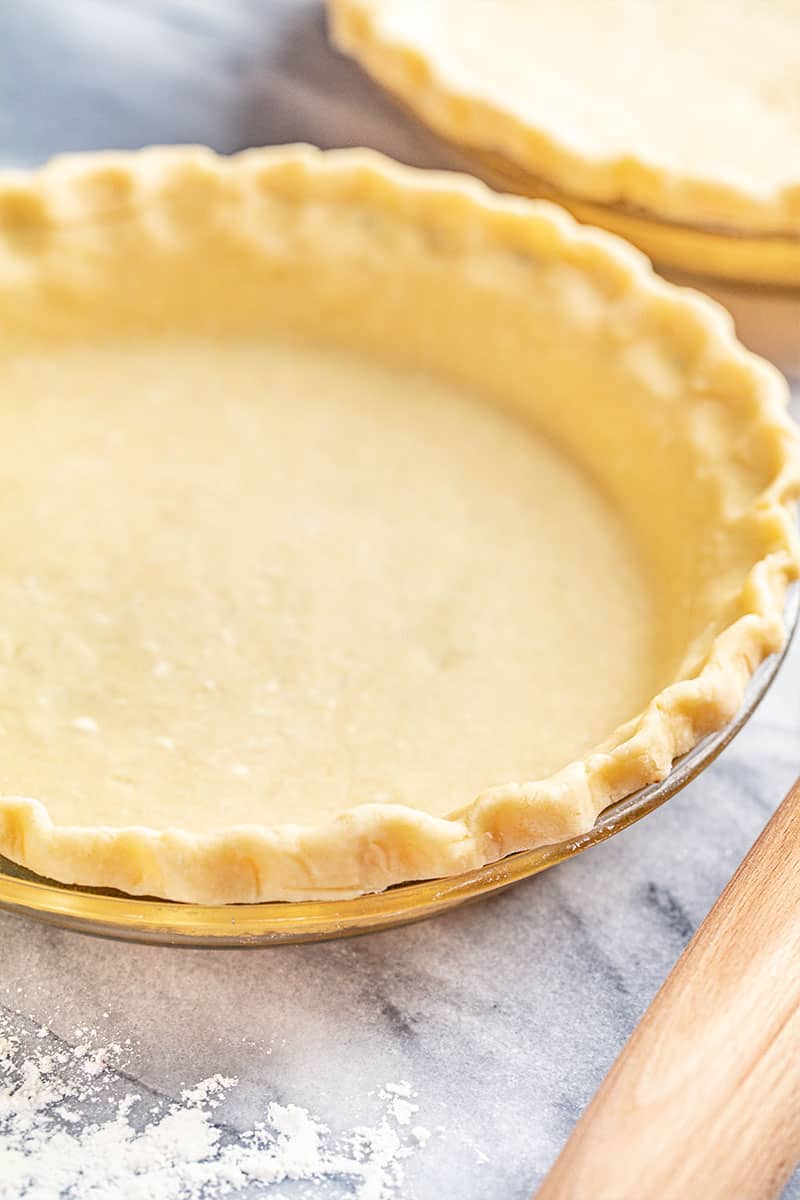
Chilling the Dough
Refrigerating the dough allows the butter and shortening to chill up again. This prevents it from getting over-worked into the dough and makes it possible for it to melt quickly when it is being baked. That quick melting action is what creates those lovely little flaky layers we love in a good crust.
Pie Weights
Pie weights are small ceramic or metal balls that are used specifically to weigh down a pie crust while “blind baking” or pre-baking. If you don’t have pie weights you can also use uncooked rice or dried, uncooked beans in place of the pie weights. This weight will prevent the pie crust from sliding or bubbling.
Make Ahead Instructions
Dough discs can be formed and then frozen for up to 3 months. Be sure to wrap the dough really well when freezing. Just thaw the dough discs in the refrigerator overnight before you intend to use them. They can also be frozen in disposable pie tins, just be sure to store them in a freezer-safe bag with as little exposure to air as possible. We always make a bunch of these at the beginning of November so we’re ready for the holidays.
Turn your crust into a delicious pie…
Watch the video below where Rachel will walk you through every step of this recipe. Sometimes it helps to have a visual, and we’ve always got you covered with our cooking show. You can find the complete collection of recipes on YouTube, our Facebook Page, or right here on our website with their corresponding recipes.
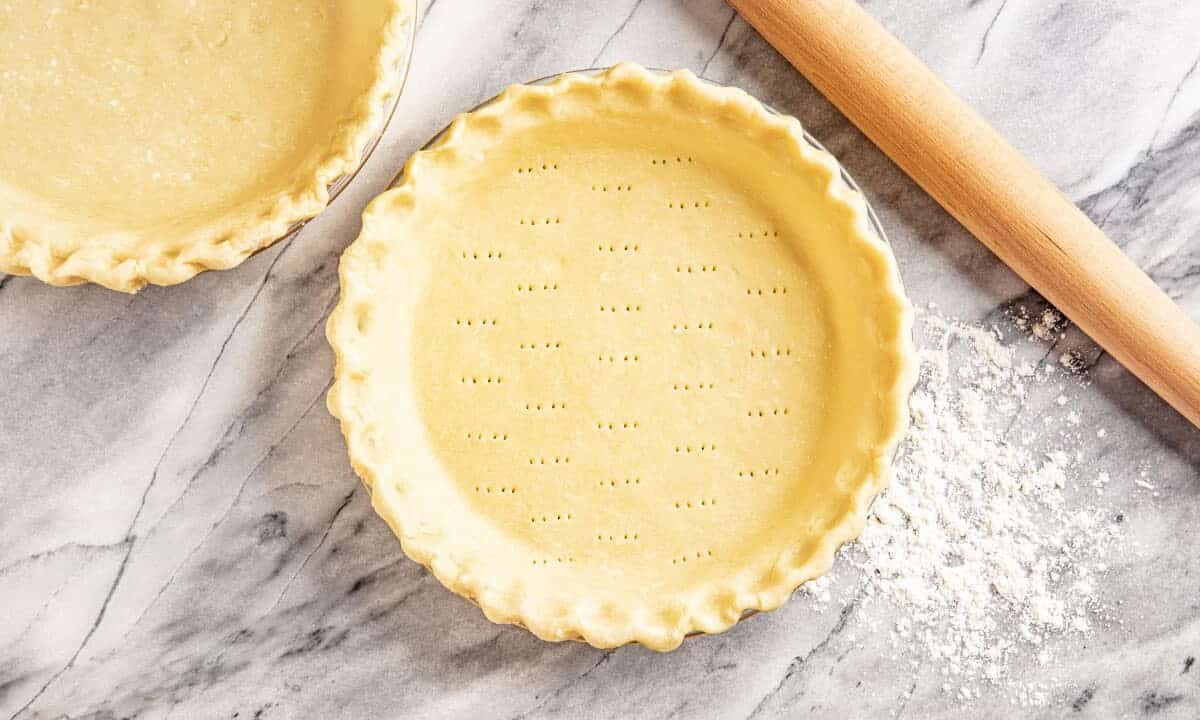
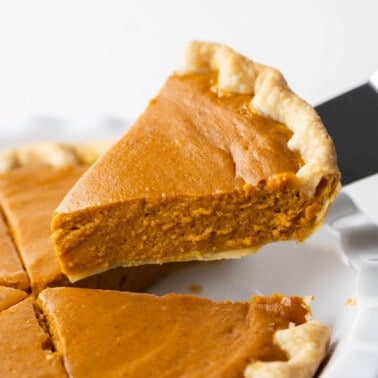
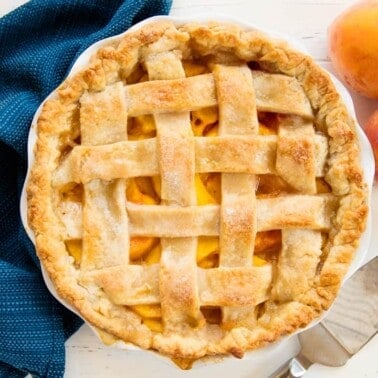
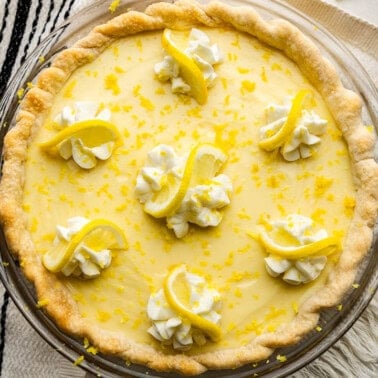
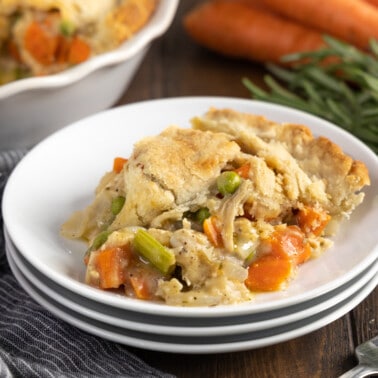
This recipe is excellent,in fact it’s the only pie crust I’ve ever been able to make by hand and have it come out tender and flakey.
I have shared this recipe with friends as many times as I have made this recipe and that’s a lot! This is my go to pie crust. So simple and delicious. Fool proof! Thank you!
I’m going to try your pie crust . I’ve made your dinner rolls and they are awesome
Why don’t you show flake and texture of fini ie crust
I have never made my own pie crust. This was amazing! Tasted great and so flakey and no soggy bottom crust.
I have never pre cooked a pie crust, say for a pumpkin pie. I always felt the fork pricks would make it soggy. Do other pre-cook crust, say for a pumpkin pie????
For our pumpkin pie recipe, we do not pre-cook the crust and it comes out perfect!
What can be substituted for the vodka?
You can replace the vodka in this pie crust recipe with an equal amount of cold water in addition to the cold water already called for in the recipe.
Do you have a video on how to make your piecrust?
Yes! It should be above the recipe card!
I’ve never had much luck with pie crusts. It was always hit or miss. I recently made a triple berry pie and used this recipe for the crust. It was outstanding! Very easy and the result was a buttery, flaky, delicious crust. This is now my go to. Thanks!
The first time I made this pie crust, I didn’t have vodka so I used water. Big mistake! I started making vanilla with vodka, so I now have vodka available. Well, Rachel is right! The vodka gave the dough almost a play dough consistency. It was easy to work with and tasted great with my custard pie! (Rachel, you need to give us a custard pie recipe!) I also used my food processor to make the crust. Super easy!